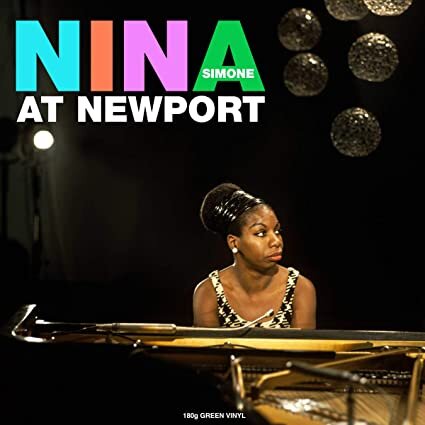Before the world knew him as David Bowie, a teenage singer-saxophone player named Davie Jones recorded his first single, “Liza Jane,” with his band The King Bees. The year: 1964. Imagine the future superstar, sitting in his flat, clutching his very first 45 rpm record.
After asking for her tambourine, Nina Simone performed “Little Liza Jane” at the 1960 Newport Jazz Festival. The tune has rarely been recorded by women, but Simone’s performance is one of the most emotionally-charged versions ever produced.
Performer and civil rights activist Harry Belafonte joyously sang and danced to “Liza Jane” during his 1960 CBS TV special New York 19, which was seen by upwards of thirty million viewers. The sponsor, Revlon, canceled future Belafonte shows when the performer refused to segregate his racially mixed cast.
“Liza Jane” songs were standards for folk singer Pete Seeger, who was investigated by Congress during the McCarthy Era. His pro-union version is a potent reminder that the song has often been reshaped by performers to reflect the urgency of contemporary themes.
“There are as many Liza songs in the Appalachian Mountains as there are species of trees on the slopes of that range.” - Carl Sandburg, American poet
With likely origins among enslaved people on southern plantations, the “Liza Jane” family of songs spread across the United States via the travels of Union and Confederate regiments, railroad workers, minstrel troupes, and folk musicians. Star performers transported the tunes into nearly every genre of popular music: rock, jazz, blues, and country — not to mention radio, film, animation, and television. Over the past three centuries, through tumult and triumph, “Liza Jane” has demonstrated an uncanny ability to appear at key moments in American history.
Narrator Dom Flemons guides the viewer as the remarkable journey of “Liza Jane” unfolds. The film weaves together archival footage with new versions of the song, performed by Flemons and a cast of stellar musicians. These new performances revitalize “Liza Jane” and expand its appeal for a new generation of listeners and viewers.
In an era of great divisiveness, the story of “Liza Jane” offers a bright reminder of our interwoven history, a reminder of what we have in common.



